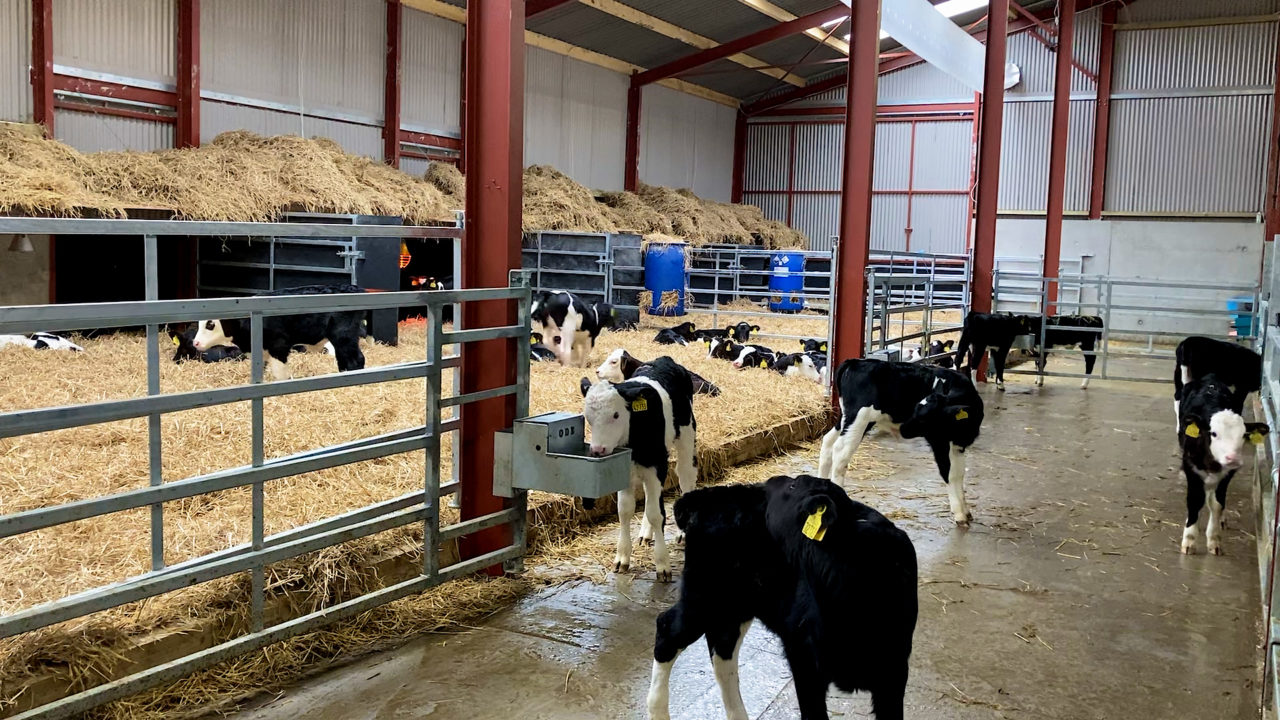It is important that autumn-born calves get off to a good start if they are to reach the target of doubling their weight by weaning.
Calves are born with no immunity, so ensuring they receive adequate quality colostrum is important.
Colostrum
Colostrum does not only provide nutrition to newborn calves, it is a source of maternal antibodies that help to protect calves from bacteria in early life.
Calves require antibodies from their mother’s colostrum that helps them fight off disease. If you have vaccinated your cows for scour, the only way these antibodies are passed to calves is through colostrum.
It is crucial that calves receive adequate colostrum within the first two hours of life. Farmers should follow the 1,2,3 rule when feeding newborn calves.
Using the 1,2,3 rule:
- Use the first milk (colostrum) from the cow;
- Feed the calf colostrum within the first two hours of birth;
- Calves must be offered at least 3L of good-quality colostrum.
The most effective way to ensure calves have received enough colostrum is through stomach tubing or a teat bottle.
Autumn-born calves
Once calves have been fed their colostrum feeds, they are generally moved onto milk replacer or whole milk until they are at least six to eight-weeks-old.
If you are feeding calves on milk replacer it is important that it is a high-quality feed and that you are consistent with your feeding.
You should ensure that you consistently use the same milk replacer for the calf rearing process to avoid upsetting calves.
Some farms feed their calves using whole milk; if you are feeding calves whole milk it is important to screen your herd for Johne’s disease.
Infected milk within the herd could pass bacteria to young calves, which could lead to them becoming infected.
Automatic feeders
The use of automatic feeders has become more popular on farms as a way of reducing labour requirement for rearing calves.
In general, the feeders offer farmers great information about the calves, such as how much they are drinking and if they are not drinking their allocation.
The feeders generally show alerts on calves that have not drank enough or left the feeder before finishing their allocation – possibly due to being forced out by an older or bigger calf.
It is important that you continue to walk through the calves regularly. Along with getting the calves used to human contact, it will help you to spot issues like this earlier.
Other issues could include a calf with an injury, a scouring calf or even bedding that needs to be changed.
Concentrates
Once calves are over a week old they should be offered concentrates in the form of pellets or coarse mix.
They should also have access to hay or straw – this access to a long fibre will help the development of a calf’s rumen.
Access to clean water should also be provided. Calves should have easy access to ad-lib water.
Generally, calves can be weaned once they are eating at least 1kg of concentrates/day.
After they have been weaned, calves should be offered 2kg of concentrates along with forage.
